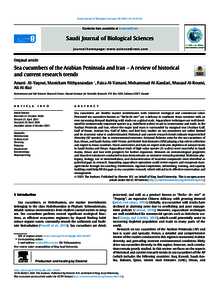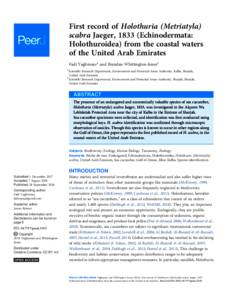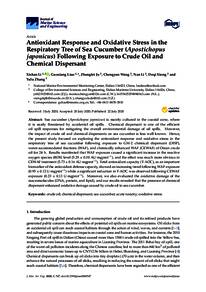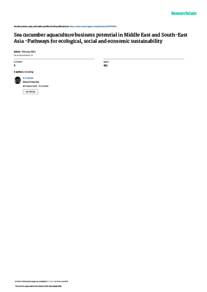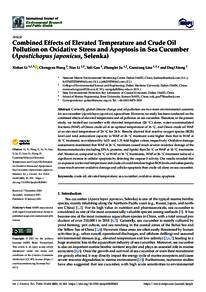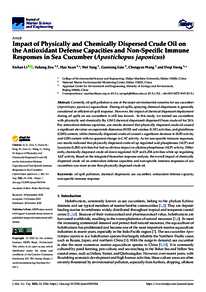Document
Sea cucumbers of the Arabian peninsula and iran – a review of historical and current research trends.
Identifier
DOI: 10.1016/j.sjbs.2021.10.001
Source
Saudi Journal of Biological Sciences. v. 28, 11, 6116-6126
Contributors
Nithyanandan, Manickam., Author
Al-Yamaniyah, Faiza., Author
Al-Kandari, Mohammad., Author
Al-Roumi, Musaad., Author
Al-Baz, Ali., Author
Country
Netherlands.
Publisher
Elsevier B.V.
Gregorian
2021-11-01
Language
English
English abstract
Sea cucumbers are benthic marine invertebrates with immense ecological and commercial value. Processed sea cucumbers known as “Beche-de-mer” are a delicacy in southeast Asian countries with an ever-increasing demand depleting wild stocks on a global scale. Aquaculture techniques are well developed for commercially important species (e.g. Holothuria scabra) to aid in conservation and trade. In the Arabian Peninsula and Iran, where the major land mass is surrounded by marginal seas (Arabian Gulf, Gulf of Oman, Arabian Sea, Gulf of Aden, and Red Sea), studies on sea cucumbers are rather limited and its economic value is underestimated. Historical and current research trends indicate impoverished diversity (82 species) due to environmental extremes. Artisanal fisheries exist for the sea cucumbers of Iran, Oman, and Saudi Arabia, with Yemen and United Arab Emirates (UAE) playing a key role in collection and export to Asian countries. Stock assessment and data on export indicates depletion of natural stocks in Saudi Arabia and Oman. Aquaculture trials of high value species (H. scabra) were successful in Saudi Arabia, Oman and Iran with prospects for further expansion. Research on ecotoxicological properties and bioactive substances conducted in Iran demonstrates an immense research potential. Molecular phylogeny, biology, use in bioremediation, and characterisation of bioactive compounds were identified as potential gaps in research. Expanding aquaculture operations could revive exports and recuperate damaged stocks through sea ranching. Furthermore, regional cooperation, networking, training, and capacity building could help fill the gaps in sea cucumber research, which will aid in its effective conservation and management.
ISSN
1319-562X
Category
Journal articles

